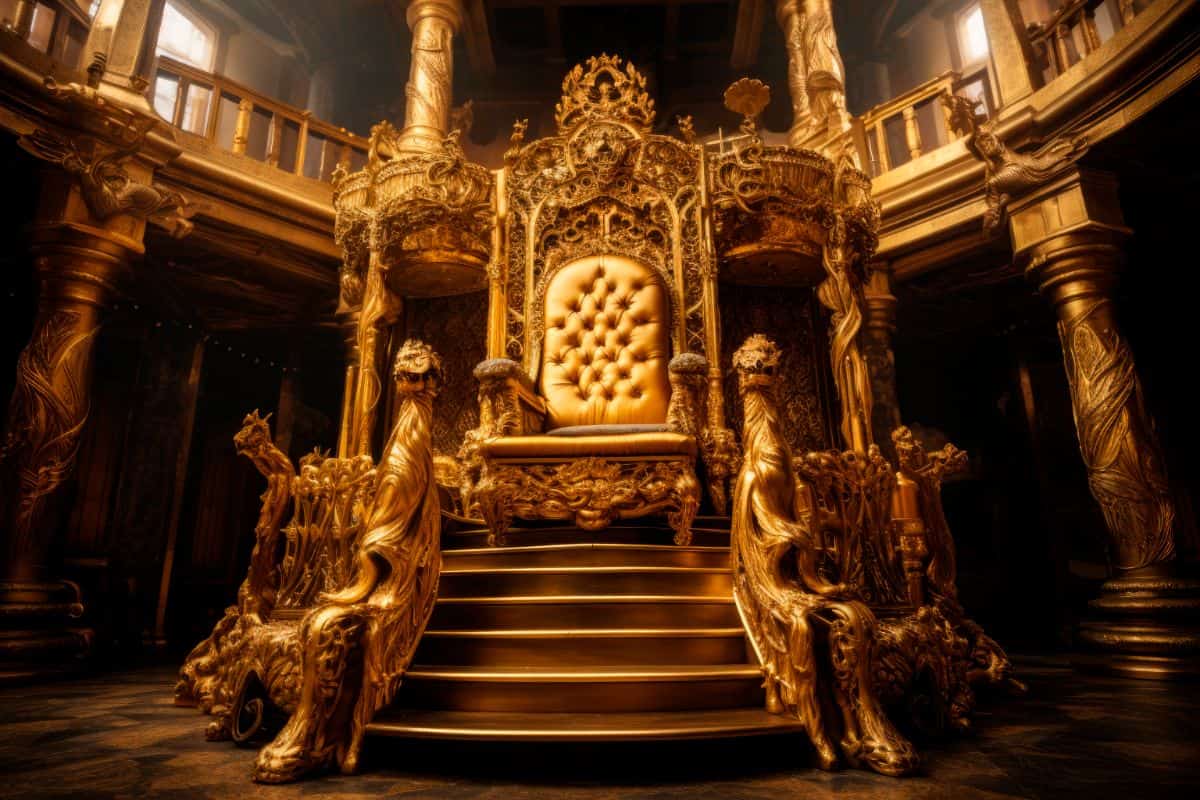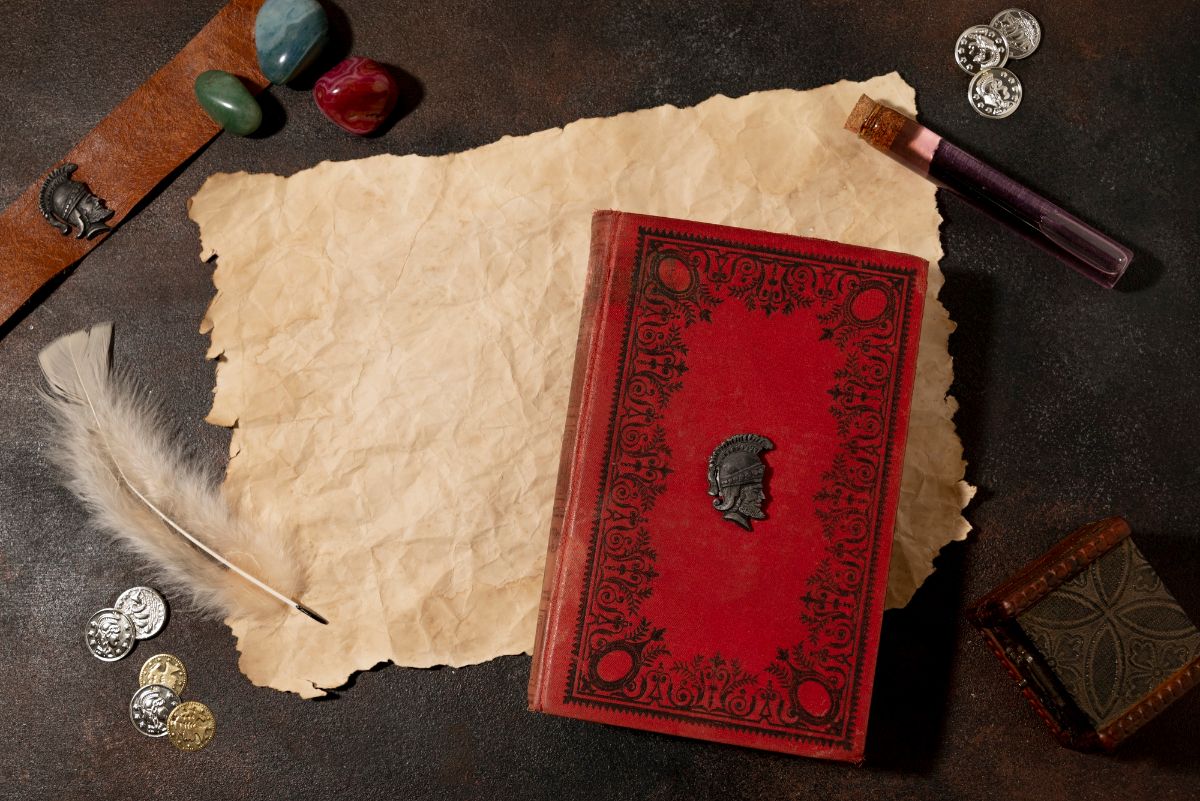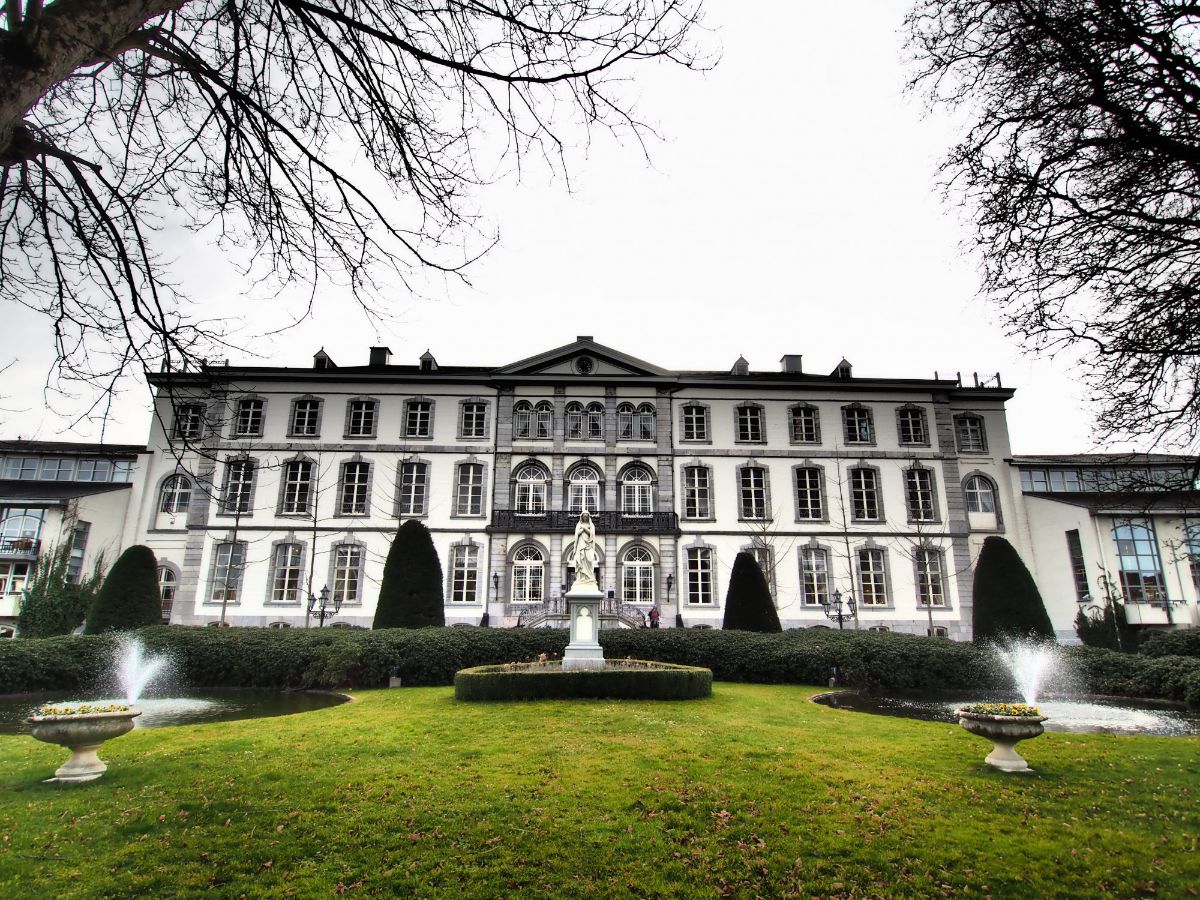Queening Chair history, historically associated with royalty and luxury, is a rich and fascinating history that traces its roots to various cultural and historical influences of the Queening Chairs History. This article explores the origins of the history of queening chairs, focusing on the Renaissance period and the royal symbolism embedded in these majestic pieces of furniture.
The Renaissance Influence
The Renaissance, a cultural and creative movement that spanned the 14th to the 17th century, played a climacteric role in shaping the design and aesthetics of queening chairs. During this period, there was a renewed interest in classical art, literature, and philosophy, leading to a revival of ancient Roman and Greek styles Queening Chairs History. This classical influence is evident in the intricate carvings, graceful curves, and ornate details of queening chairs from the Renaissance era.
Royal Symbolism
Queening chairs have long been associated with royalty and have served as symbols of authority and prestige. The design elements incorporated into these chairs often reflected the status and power of the individuals who used them in Queening Chairs History. Intricate carvings depicting royal insignia, coats of arms, and mythological motifs were typical, further emphasizing the regal nature of these pieces.
Evolution of Design
Queening chairs have undergone a fascinating evolution in design, adapting to changing artistic movements and cultural preferences Queening Chairs History. Two key aspects that highlight this evolution are intricate carvings and ornamentation, as well as the varied materials used over the centuries.
Intricate Carvings and Ornamentation
One of the defining features of queening chairs throughout history has been the intricate carvings and ornamentation that adorn them. In the Renaissance period, chairs were embellished with detailed motifs inspired by classical art, including mythological figures, foliage, and geometric patterns. As time progressed, different design elements emerged, reflecting the prevailing artistic styles of each era.
Materials Used Over the Centuries
Queening chairs have been crafted from a diverse range of materials over the centuries, each contributing to the overall aesthetic and durability of the piece’s history. In the Renaissance, artisans favored richly carved wood, often using oak, walnut, or mahogany. Gilding, the application of gold leaf, was commonly employed to add luxury to the furniture.
Queening Chairs in Different Cultures
Queening chairs, though often associated with European royalty, have also played significant roles in other cultures, Queening Chairs History reflecting diverse design sensibilities and cultural symbolism. Queening chairs have found a place in different cultures, with each region contributing unique designs that reflect both aesthetic preferences and cultural symbolism.
European Royalty
In Europe, queening chairs became integral to the regal ceremonies and courtly rituals of monarchs. Queening chairs history The designs varied across regions and periods, reflecting the evolving tastes of European royalty. From the ornate thrones of medieval kings to the refined elegance of neoclassical queens’ chairs, Europe has a rich tradition of queening chair design.
Asian Dynasties
Asian cultures, particularly in China and Japan, have a history of crafting imperial thrones and ceremonial chairs. Chinese emperor thrones, for example, often featured dragon motifs, symbolizing imperial power, while Japanese designs emphasized simplicity and harmony with nature, queuing chairs, and history. These chairs were not only functional but also imbued with profound cultural and symbolic significance.
African Thrones
In various African cultures, thrones and queening chairs hold great cultural importance. These chairs are often crafted with distinctive local materials, reflecting the artistic traditions of specific regions. Symbolic carvings, tribal motifs, and vibrant colors are common elements in African thrones, representing the rich cultural diversity of the continent Queening chairs history.
Iconic Queening Chairs Throughout History
Several queening chairs have achieved iconic status throughout history, representing not only exquisite craftsmanship but also embodying the power and prestige of the individuals who occupied them Queening Chairs History.
The Coronation Chair
The Coronation Chair, located in Westminster Abbey in London, is one of the most iconic queening chairs in history. The building was constructed in the year 1296. King Edward I commissioned it to house the Stone of Scone, a symbol of Scottish kingship. The chair is a masterpiece of medieval craftsmanship, featuring intricate Gothic tracery, arches, and sculptures. Since the 14th century, it has been used in the coronation ceremonies of English and later British monarchs, making it a symbol of continuity and royal authority.
The Peacock Throne
Commissioned by the Mughal sovereign Shah Jahan in the 17th century, the Peacock Throne was a marvel of luxury and craftsmanship. Located in the Red Fort in Delhi, India, the throne was adorned with gold, silver, and precious stones. The back of the throne resembled a peacock’s tail, giving it its name. The Peacock Throne served as a powerful symbol of the wealth and grandeur of the Mughal Empire until it was looted and destroyed in the 18th century. Despite its loss, the Peacock Throne remains a legendary example of queening chair magnificence.
The Golden Stool
The Golden Stool, or Sika Dwa Kofi, is a godly symbol of the Ashanti people in Ghana. Crafted from wood and covered in gold leaf, this queening chair is not only a remarkable piece of art but holds immense cultural and spiritual significance. According to Ashanti tradition, the stool is considered to house the spirit of the Ashanti nation. It played a pivotal role in the Ashanti resistance against British colonial power in the early 20th century, symbolizing unity and the strength of the Ashanti people.
Power and Authority
Queening chairs symbolize power and authority, serving as thrones for rulers, monarchs, and leaders. The ornate designs and regal materials used in crafting these chairs reinforce the status of those who sit in them. Whether in European palaces, Asian courts, or African kingdoms, queening chairs are tangible expressions of leadership and sovereignty.
Rituals and Ceremonies
Queening chairs play a central role in rituals and ceremonies, especially those related to coronations, inaugurations, and other formal events. The act of sitting in a queening chair during such occasions carries immense symbolic weight, marking the assumption of authority or participation in significant cultural rites. These chairs often become focal points in the visual narrative of essential ceremonies, embodying tradition and continuity.
Influence on Modern Furniture
Queening chairs, with their rich history and symbolic significance, continue to influence modern furniture design the Queening Chairs History. This influence is evident in both contemporary queening chairs and their presence in popular culture.
Contemporary Queening Chairs
Modern furniture designers often draw inspiration from the elaborate designs and regal aesthetics of historical queening chairs. Contemporary queening chairs may reinterpret traditional elements with a minimalist or avant-garde twist, blending historical grandeur with sleek, modern lines. These chairs can be found in upscale interior design, adding a touch of luxury and historical resonance to contemporary living spaces.

Queening Chairs in Pop Culture
Queening chairs have made their mark in pop culture, appearing in various forms across media and entertainment. From television shows and films to music videos and fashion shoots, the iconic silhouette and ornate details of queening chairs are frequently utilized to convey a sense of luxury, authority, or artistic flair.
Preservation Efforts
I believe you meant to say: “Please keep in mind the following text: ‘Recognizing the historical and cultural significance of queening chairs.'” Efforts are made to preserve and celebrate these iconic pieces of furniture. Includes restoration projects, museum exhibitions, and a recent revival of interest in queening chairs in various forms.
Restoration Projects
Dedicated artisans and preservationists undertake restoration projects to revive queening chairs from different historical periods. These projects aim to bring back the original beauty and craftsmanship of these chairs, ensuring that future generations can appreciate them. Restoration work often involves meticulous attention to detail, from repairing intricate carvings to recreating authentic upholstery.
Museums and Exhibitions
Museums around the world house queening chairs as part of their collections, showcasing the historical and artistic value of these pieces. Special exhibitions focused on furniture design and historical thrones provide a platform for enthusiasts and scholars to explore the evolution and cultural significance of queening chairs.
Trending in Home Decor
Queening chairs have become trendy in modern home decor, with designers and homeowners incorporating them as statement pieces. Whether as a functional throne-like chair or an ornamental accent, queening chairs are celebrated for their unique mix of historical allure and contemporary style.
Artistic Interpretations
Artists and designers are creating innovative and artistic interpretations of queening chairs, exploring new materials, shapes, and concepts. These reinterpretations often push the boundaries of traditional design, contributing to the ongoing evolution of queening chair aesthetics.
Traditional Techniques
Artisans may employ traditional woodworking techniques, intricate hand carving, and gilding to recreate the historical authenticity of Queening Chairs history. Upholstery is often done using traditional methods, with attention to period-appropriate fabrics and detailing.
Modern Artisan Approaches
Some contemporary queening chairs are crafted using modern materials and techniques, allowing for greater flexibility in design and functionality. Artisans may use advanced woodworking tools, 3D printing technology, and innovative materials to create chairs that capture the essence of queening chair aesthetics while adapting to contemporary tastes.
Symbolism in Stories
In literature, queuing chairs often symbolize power, authority, and the complexities of leadership. They serve as thrones of kings and queens, becoming symbolic focal points in stories of politics, intrigue, and royalty. The act of ascending or descending from a queening chair can carry profound narrative weight, representing shifts in power dynamics.
Cinematic Representations
Queening chairs are frequently featured in films, historical dramas, fantasy epics, and period pieces. They contribute to the visual richness of cinematic worlds, portraying the opulence of royal courts and the grandeur of ceremonial events. From epic battles to intimate conversations, queening chairs become integral elements in storytelling, enhancing the overall cinematic experience.
Challenges and Controversies
The production and appreciation of queening chairs are not without challenges and controversies. Queening Chairs History Two prominent issues include concerns related to cultural appropriation and the ethical sourcing of materials.
Cultural Appropriation
Queening chairs, with their diverse cultural origins, can become the subject of cultural appropriation debates. When elements of these chairs are borrowed or reproduced without proper understanding or respect for the cultural context, it raises questions about authenticity and sensitivity Queening Chairs History. Balancing inspiration with cultural awareness is crucial to avoid appropriative practices in the design and use of queening chairs.
Ethical Sourcing of Materials
The materials traditionally used in crafting queening chairs, such as wood, metals, and fabrics, pose challenges related to ethical sourcing Queening Chairs History. Deforestation, exploitation of labor, and environmental concerns are issues that need careful consideration. Modern designers and manufacturers must prioritize ethical and sustainable practices in material sourcing to address these challenges.
Social Media Influence
Queening chairs, particularly those with visually striking designs, often find a significant presence on social media platforms Queening Chairs History. Design enthusiasts, influencers, and interior decorators share images of these chairs, contributing to trends and influencing how queening chairs are perceived in the digital realm of most famous carpenter in history nyt. Social media platforms become virtual galleries, showcasing the beauty and diversity of queening chair designs.
Online Marketplaces
The accessibility of queuing chairs has expanded through online marketplaces. Consumers can now explore and purchase these chairs from a global market, facilitating a broader appreciation for different styles and cultural influences Queening Chairs History. However, this digital accessibility also raises challenges related to authenticity, quality control, and ethical considerations in the online trade of queening chairs.
Conclusion
Queening chairs, with their intricate history and cultural significance, continue to evolve and captivate the imagination of designers, enthusiasts, and consumers. While facing challenges related to cultural appropriation and ethical material sourcing, the future trends in queening chair design are likely to emphasize sustainability and technological integration Queening Chairs History. The digital age has amplified the visibility and accessibility of queening chairs, making them not only objects of historical and cultural importance but also relevant elements in contemporary design and online commerce.
Frequently Asked Questions (FAQs)
Are queening chairs only associated with royalty?
While queening chairs have historical ties to royalty, their symbolism has evolved, and they are now appreciated in various cultural contexts.
How can one distinguish an authentic queening chair from a replica?
Authentic queening chairs often exhibit intricate craftsmanship and historical details. Certifications from reputable sources can also validate their authenticity.
What are the key factors to consider when incorporating a queening chair into home decor?
Consider the size of the space, the overall design aesthetic, and the cultural significance of the queening chair to ensure a harmonious integration.
Are queening chairs still used in modern ceremonies and events?
Yes, queening chairs continue to be used in ceremonies and events, adding a touch of tradition and grandeur to the proceedings.
How can individuals donate to the preservation of queening chairs and their cultural heritage?
Supporting museums, restoration projects, and ethical artisans helps contribute to the preservation of queening chairs and their cultural heritage.











